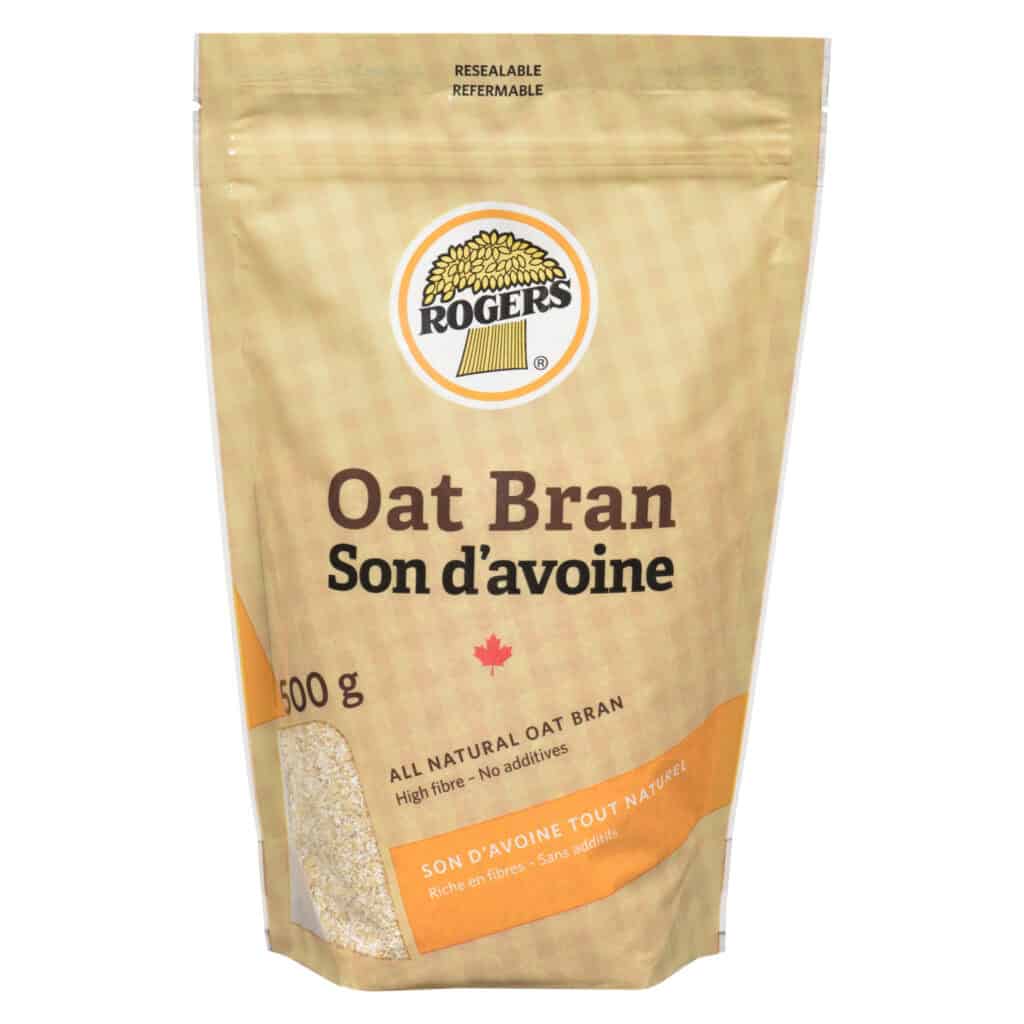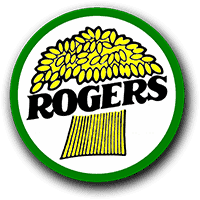WELLNESS CORNER – with Rogers Foods Registered Holistic Nutritionist Tammy-Lynn


Dietary fibre, often termed roughage, is a vital component of a healthy diet. It is primarily found in fruits, vegetables, whole grains, and legumes. Unlike other food components such as fats, proteins, or carbohydrates that the body breaks down and absorbs, fibre isn’t digested by the body. Instead, it passes relatively intact through the stomach, small intestine, and colon and out of the body. Despite its journey largely untouched, the benefits of dietary fibre to human health are profound and manifold.
Types of Dietary Fibre
Dietary fibre is classified into two categories: soluble and insoluble. Both types are essential for maintaining good health.
- Soluble Fibre: Found in oats, peas, beans, apples, citrus fruits, carrots, barley, and psyllium. It dissolves in water to form a gel-like substance. Soluble fibre helps lower blood cholesterol and glucose levels.
- Insoluble Fibre: Found in whole-wheat flour, wheat bran, nuts, beans, and vegetables, such as cauliflower, green beans, and potatoes. It promotes the movement of material through your digestive system and increases stool bulk.
- Digestive Health and Regularity: One of the most recognized benefits of fibre is its ability to prevent or relieve constipation. Insoluble fibre increases stool bulk and promotes regular bowel movements, reducing the risk of digestive issues such as hemorrhoids and diverticulosis. By facilitating smooth and regular defecation, fibre helps maintain the health of your intestines.
- Maintaining Healthy Weight: High-fibre foods generally require more chewing, which gives your body more time to register when you’re no longer hungry, reducing the likelihood of overeating. Furthermore, since fibre-rich foods are more filling than low-fibre foods, you’re likely to feel fuller sooner and stay fuller for longer. This helps in maintaining a healthy weight and preventing obesity-related diseases.
- Regulating Blood Sugar Levels: For individuals with diabetes, fibre — particularly soluble fibre — can slow the absorption of sugar and help improve blood sugar levels. A healthy diet that includes insoluble fibre has also been associated with a reduced risk of developing type 2 diabetes.
- Lowering Cholesterol Levels: Soluble fibre found in beans, oats, flaxseed, and oat bran may help lower total blood cholesterol levels by lowering low-density lipoprotein, or “bad,” cholesterol levels. Research also has shown that high-fibre foods may have other heart-health benefits, such as reducing blood pressure and inflammation.
- Heart Health: Besides lowering cholesterol, fibre also positively influences other factors that foster heart health. Its consumption is linked to reduced blood pressure, reduced inflammation, and better overall cardiovascular health. High-fibre foods, with their nutrient-dense profile, provide essential vitamins and minerals that play an integral role in maintaining a healthy heart.
- Gut Microbiome: Fibre acts as a prebiotic, fuelling our gut’s healthy bacteria (probiotics). These bacteria are essential for a healthy digestive system and play a significant role in the body’s immunity. By nourishing these bacteria, fibre promotes a healthy gut microbiome which is linked to improved digestion, enhanced immune function, and better overall health.
- Cancer Prevention: Dietary fibre contributes to overall gastrointestinal health and cancer prevention. High fibre intake is associated with a reduced risk of colorectal cancer. The fermentation of fibre in the colon produces short-chain fatty acids, which have protective effects against cancer development.
- 10. Nutritional Benefits: Foods rich in fibre are typically also rich in vitamins and minerals. Whole fruits and vegetables, for instance, contain fibre and are valuable sources of essential nutrients such as Vitamins A, C, and potassium. Whole grains provide B vitamins and iron, adding to their health benefits.
- 11. Improved Longevity: Research has indicated that a diet high in dietary fibre is associated with a lower risk of dying from cardiovascular disease and all cancers. Fibre intake is correlated with decreased mortality due to its myriad of health benefits discussed above.
The crucial role of dietary fibre in maintaining optimal health cannot be overstated. The benefits are extensive, from promoting digestive regularity and maintaining a healthy weight to lowering cholesterol and regulating blood sugar levels. When we feed the good bacteria in our gut, fibre ensures a well-functioning digestive system, which is vital for overall health. Eating sufficient fibre-rich foods is a simple yet powerful way to improve and protect our health.
Here are some fibre-rich breakfast ideas
1. Oatmeal with Fruits and Nuts
Ingredients:
– 1 cup ROGERS FOODS LARGE FLAKE OATS or ANCIENT GRAIN BLEND PORRIDGE OATS or HEALTHY GRAIN BLEND PORRIDGE OATS or STEEL CUT OAT BLEND PORRIDGE OATS
– 2 cups water or milk
– 1 banana, sliced
– A handful of berries (blueberries, strawberries, etc.)
– 1 tablespoon chia seeds
– 1 tablespoon flaxseeds
– A handful of chopped nuts (almonds, walnuts, etc.)
Instructions:
1. Cook oats with water or milk as per package instructions.
2. Top with banana slices, berries, chia seeds, flaxseeds, Rogers Granola or chopped nuts.
2. Smoothie Bowl
Ingredients:
– 1 banana
– 1 cup spinach or kale
– 1/2 avocado
– 1/2 cup Greek yogurt
– 1 tablespoon chia seeds
– 1 tablespoon flaxseeds
– 1 cup almond milk
– Toppings: fresh fruits, granola, shredded coconut, toasted oats
Instructions:
1. Blend all ingredients until smooth.
2. Pour into a bowl and top with preferred toppings.
3. Whole Grain Toast with Avocado and Egg
Ingredients:
– 1 slice whole grain bread
– 1/2 avocado, mashed
– 1 boiled or poached egg
– Salt, pepper, and red pepper flakes to taste
Instructions:
1. Toast the whole grain bread.
2. Spread mashed avocado on the toast.
3. Top with a boiled or poached egg. 4. Season with salt, pepper, and red pepper flakes.
4. Chia Seed Pudding
Ingredients:
– 1/4 cup chia seeds
– 1 cup almond milk
– 1 tablespoon maple syrup or honey
– Toppings: fresh berries, sliced almonds, granola
Instructions:
1. Mix chia seeds, almond milk, and sweetener in a bowl.
2. Let it sit in the fridge for at least 30 minutes or overnight.
3. Stir well before serving and top with desired toppings.
5. Berry and Nut Parfait
Ingredients:
– 1 cup Greek yogurt
– 1/2 cup mixed berries (blueberries, strawberries, raspberries)
– 1/4 cup granola
– 2 tablespoons chopped nuts (almonds, walnuts, pecans)
– A drizzle of honey
Instructions:
1. Layer Greek yogurt, berries, granola, and nuts in a bowl or jar.
2. Drizzle with honey before serving.
6. High-Fiber Pancakes
Ingredients:
– 1 cup whole wheat flour
– 1 tablespoon flaxseed meal
– 1 tablespoon chia seeds
– 1 tablespoon baking powder
– 1 cup milk (dairy or non-dairy)
– 1 egg
– 2 tablespoons honey or maple syrup
– 1 teaspoon vanilla extract
Toppings: fresh fruit, nuts, maple syrup
Instructions:
1. Mix the dry ingredients (whole wheat flour, flaxseed meal, chia seeds, baking powder) in a large bowl.
2. Add milk, egg, honey, and vanilla.
3. Stir until combined. Cook on a griddle or frying pan until bubbles form, then flip. 4. Serve with fresh fruit, nuts, and maple syrup. Enjoy your fibre-rich breakfast!



Leave a Reply